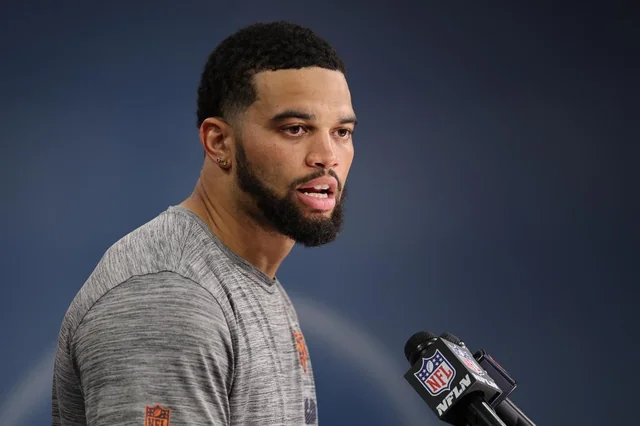In fantasy football, drafting a quarterback (QB) can make or break your season. While many managers rush to grab elite QBs like Patrick Mahomes or Josh Allen in the early rounds, a growing strategy among savvy players is the “QB waiting game.” This approach involves delaying your quarterback selection until the later rounds, allowing you to build a stronger roster at other positions while still landing a serviceable QB. Here’s how the quarterback waiting game works, why it’s effective, and how you can leverage it to dominate your fantasy league.
Why Wait on a Quarterback?
The logic behind waiting on a quarterback stems from the depth and consistency at the position in modern fantasy football. Unlike running backs or wide receivers, where elite talent is scarce, the QB position is loaded with players who can deliver solid production. In 2024, for example, 15-20 quarterbacks consistently put up starter-worthy numbers each week, thanks to the NFL’s pass-heavy offenses. This depth means you don’t need to spend a high draft pick to get a reliable option.
Additionally, the scoring gap between top-tier and mid-tier QBs is often smaller than at other positions. For instance, in 2023, the difference between the QB1 (top scorer) and QB10 was roughly 4-5 points per game in standard leagues, while the gap between RB1 and RB10 was often double that. By prioritizing scarce positions like running back or wide receiver early, you can secure elite talent where it matters most, then grab a QB later who still delivers 80-90% of the production of a first-rounder.
The Strategy: How to Execute the Waiting Game
To successfully implement the QB waiting game, follow these steps:
-
Prioritize Premium Positions Early: Use your first 4-6 rounds to draft elite running backs, wide receivers, or even a top tight end like Travis Kelce. These positions have steeper drop-offs in talent, so locking in stars like Christian McCaffrey or Tyreek Hill gives you a significant edge.
-
Target QBs in Rounds 7-10: By this point, the elite QBs are gone, but you’ll find a tier of reliable options. In 2024, players like Dak Prescott, Jared Goff, or Tua Tagovailoa often fell to these rounds. These QBs play in high-powered offenses and can produce 20+ fantasy points per game, making them excellent value picks.
-
Focus on Consistency Over Flash: When waiting, prioritize QBs with steady production over boom-or-bust types. For example, a QB like Kirk Cousins, who throws for 250-300 yards and 1-2 touchdowns weekly, is often a better late-round pick than a high-upside but inconsistent rookie.
-
Monitor Matchups and Stream if Needed: The waiting game doesn’t mean settling for one QB all season. Many managers stream QBs based on favorable matchups, rotating between 2-3 late-round options. Tools like fantasypros.com or ESPN’s matchup rankings can help identify weekly streaming candidates.
-
Don’t Ignore Rushing Upside: QBs with rushing ability, like Daniel Jones or Geno Smith, often fall to later rounds but offer a high fantasy floor due to their dual-threat nature. Even 30-40 rushing yards per game can add 3-4 points to a QB’s total, making them valuable late picks.
Why It Works: The Math Behind the Strategy
The QB waiting game thrives because of opportunity cost. When you draft a QB in Round 2, you’re passing on a player like Breece Hall or A.J. Brown, who could score 20+ points weekly at their respective positions. Meanwhile, a QB like Jordan Love, available in Round 8, might only score 3-4 points less per game than a top-tier QB. The net gain from securing an elite RB or WR far outweighs the small loss at QB.
For example, let’s say you draft Mahomes in Round 2 (averaging 25 points per game) and a mid-tier RB like Rhamondre Stevenson in Round 8 (12 points per game). Compare that to drafting Jonathan Taylor in Round 2 (20 points per game) and Goff in Round 8 (20 points per game). The second approach yields a higher combined output because the RB upgrade (Taylor over Stevenson) is more significant than the QB downgrade (Mahomes to Goff).
Risks and How to Mitigate Them
The strategy isn’t foolproof. Injuries, regression, or unexpected breakouts can disrupt your plans. To minimize risks:
-
Draft Two QBs: If you wait on a QB, consider grabbing a second one a few rounds later as insurance. Pairing someone like Baker Mayfield with a high-upside rookie like Jayden Daniels ensures you’re covered if one underperforms.
-
Stay Active on the Waiver Wire: The QB position is fluid, with breakout players emerging yearly. In 2023, C.J. Stroud and Brock Purdy were waiver-wire gems. Monitor rookie QBs or backups who earn starting roles.
-
Know Your League’s Scoring: In leagues with heavy QB scoring (e.g., 6 points per passing TD), the value of elite QBs increases, so you may need to adjust and draft one earlier.
Real-World Success Stories
The QB waiting game has fueled championship runs for many fantasy managers. In 2023, managers who waited and drafted QBs like Russell Wilson or Justin Herbert in later rounds often outperformed those who invested early in QBs like Jalen Hurts, thanks to their stronger RB and WR cores. Posts on X from last season echoed this, with users like @FantasyGuru23 boasting about winning leagues by pairing late-round QBs with early stud RBs.
Final Thoughts
The quarterback waiting game is about maximizing value and exploiting the depth at the QB position. By focusing on premium positions early, targeting consistent QBs later, and staying flexible with streaming, you can build a roster that’s tough to beat. The key is discipline—resist the urge to chase the shiny new QB and trust the depth of the position. With the right execution, this strategy can give you a championship-caliber team without sacrificing early draft capital.


